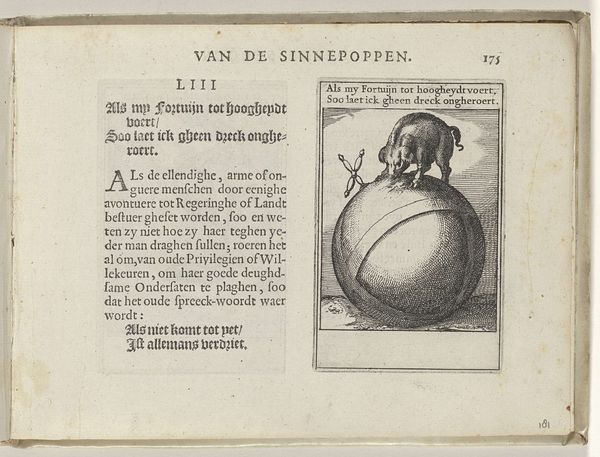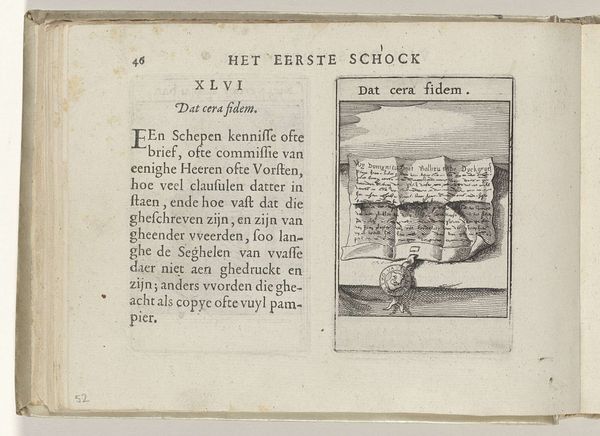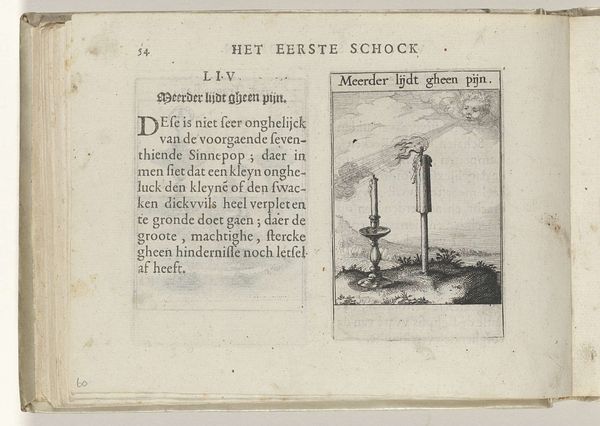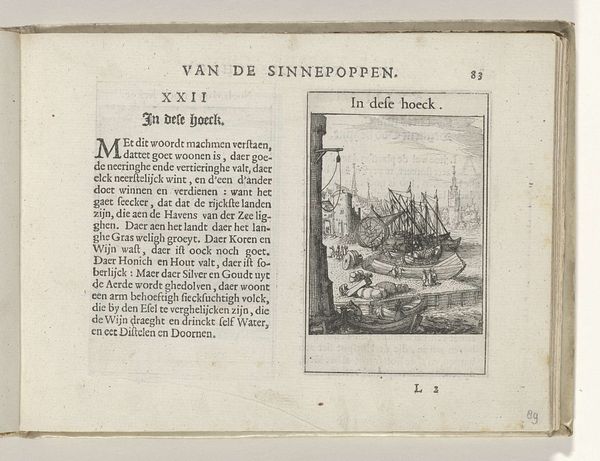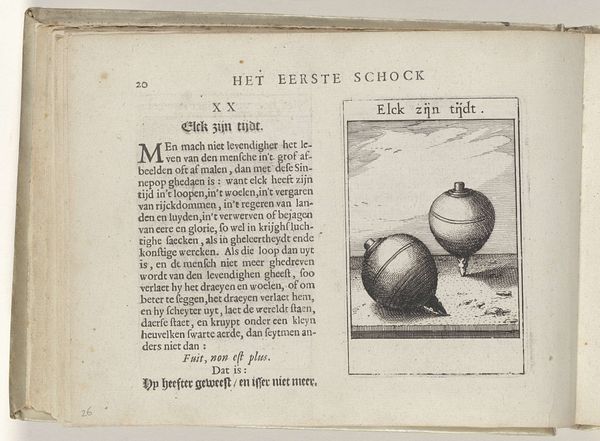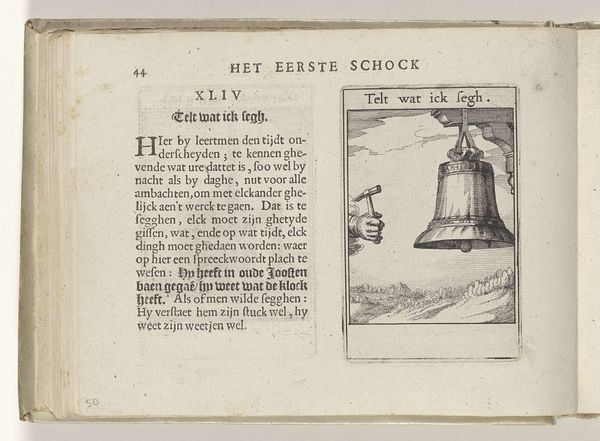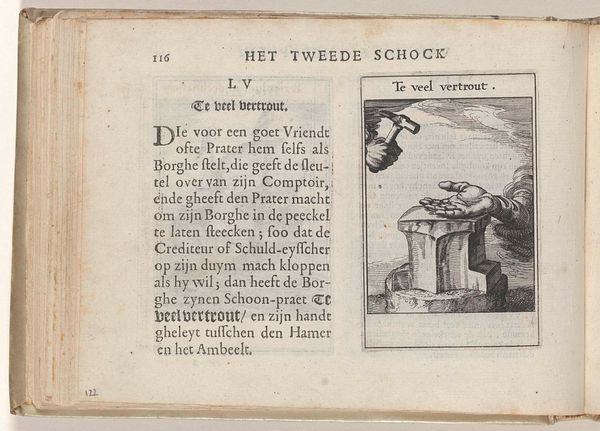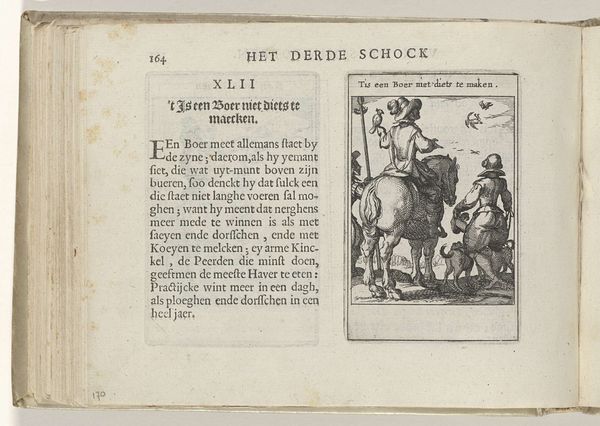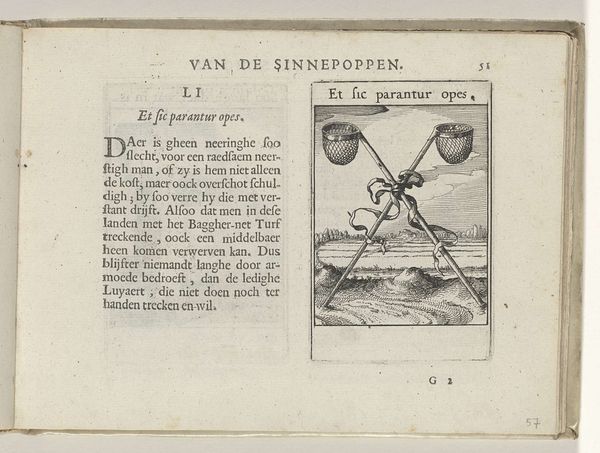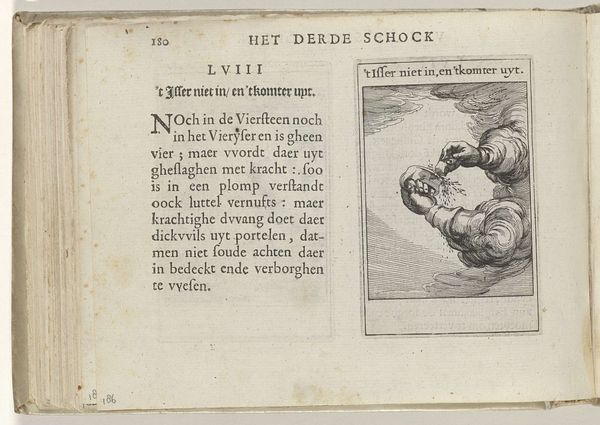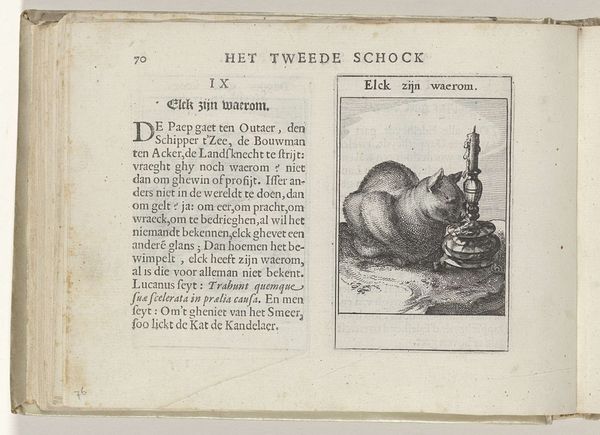
print, paper, engraving
#
allegory
#
baroque
#
dutch-golden-age
#
ink paper printed
# print
#
figuration
#
paper
#
line
#
engraving
Dimensions: height 137 mm, width 188 mm, height 95 mm, width 60 mm
Copyright: Rijks Museum: Open Domain
Curator: Here we have Roemer Visscher’s “XXXVI Goet Schimmanschap,” an engraving from 1614, currently held in the Rijksmuseum collection. The image appears to be part of a printed book, judging by its format and inclusion of text. Editor: It strikes me as curious, a playful alchemy perhaps. There's a delicate, almost whimsical quality to the way the lines describe the forms – a flask being filled through a funnel. It reminds me of early scientific illustrations, though perhaps with a sly wink. Curator: Visscher's work exists at an intriguing intersection. It is of its time, the Dutch Golden Age. Prints such as these played an interesting role in circulating ideas and cultural values, making art more accessible, of course. Editor: The composition leads your eye through a very deliberate sequence. First, the pitcher, poised in mid-pour; then, the slim neck of the funnel; and finally, the vessel below awaiting the transfer. It speaks to order, purpose, and control, though the allegory suggests it's deeper. Curator: Indeed, its strength lies in its emblematic use. The engraving, a scene of pouring liquid through a funnel, accompanies a moralizing poem. Editor: So, what virtue is being exemplified here in the process? Curator: The phrase, “Goet Schimmanschap," alludes to skill in disguise, or "Good Pretence". The poem suggests that if one sets up the apparatus correctly and pours carefully, one will ultimately succeed. It’s a commentary on presenting a pleasing illusion while hiding imperfections. Think how these allegories offered guidance. Editor: The delicate line work contrasts with the quite robust message, though this small window of a piece really makes one consider these concepts. I do wonder how such a simple image circulated and how it was read by different people during that era. Curator: Agreed. There are questions here of function and display within a changing society. So it always returns to cultural relevance, even after all these centuries.
Comments
No comments
Be the first to comment and join the conversation on the ultimate creative platform.
